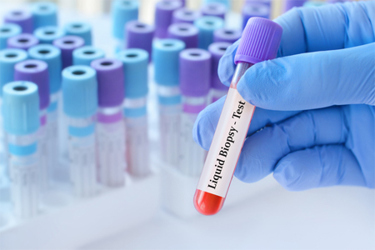Detect Ultra-Rare Variants In cfDNA From Liquid Biopsy Samples Using An End-To-End NGS Workflow
By Zhong Wu, Krishna Amin, Christa Haldrup, Emil Christensen, and Simon Hertlein, QIAGEN

Liquid biopsy is rapidly emerging as a transformative tool in the field of precision oncology, which offers a less invasive and more dynamic alternative to traditional tissue biopsies. By analyzing cell-free DNA (cfDNA) and other molecular analytes found in body fluids such as blood, researchers can monitor tumor behavior and genetic alterations in real time. This approach enables repeated sampling, which is crucial for tracking disease progression and response to treatment, ultimately supporting the development of personalized therapeutic strategies tailored to each patient’s unique cancer profile.
Among the technologies used in liquid biopsy, next-generation sequencing (NGS) of cfDNA stands out for its exceptional capabilities. NGS offers high throughput, remarkable sensitivity, and the ability to simultaneously analyze multiple genetic targets, which makes it a powerful tool for discovering novel mutations and understanding the complex molecular landscape of tumors. The QIAseq Targeted cfDNA Ultra Panels workflow enables detection of mutations down to 0.1% variant allele frequency (VAF) with >99% specificity. Its comprehensive genome-wide coverage, combined with the non-invasive nature of liquid biopsy, allows researchers to gain deep insights into cancer biology quickly and efficiently. Compatible with both manual and automated cfDNA extraction protocols, this solution supports fast turnaround, from sample to insight in under 4 days. Applications include therapy response monitoring, MRD detection, and biomarker discovery, making it ideal for translational and clinical research use.
Explore how this integration of advanced sequencing with minimally invasive sampling is revolutionizing cancer research and clinical care, paving the way for more precise and effective treatments.
Get unlimited access to:
Enter your credentials below to log in. Not yet a member of Bioprocess Online? Subscribe today.
